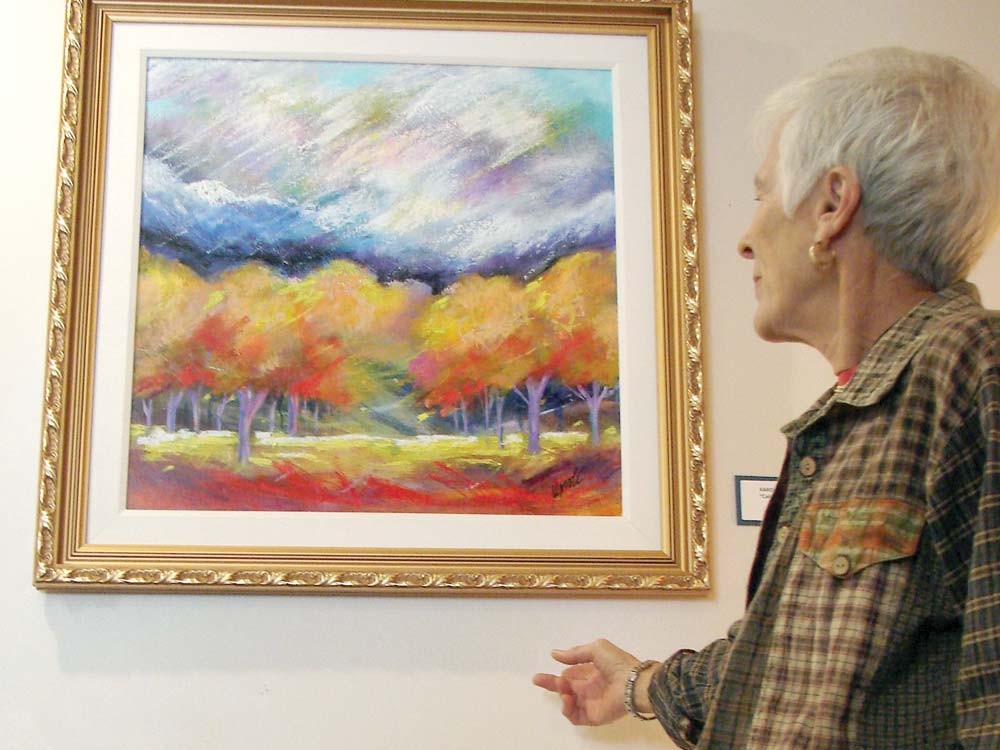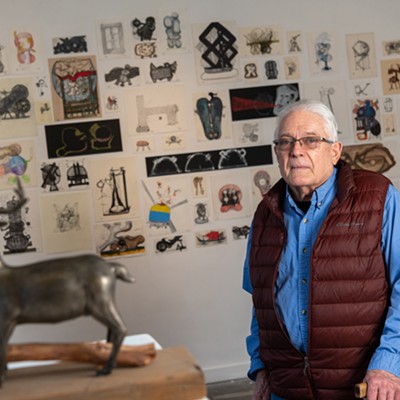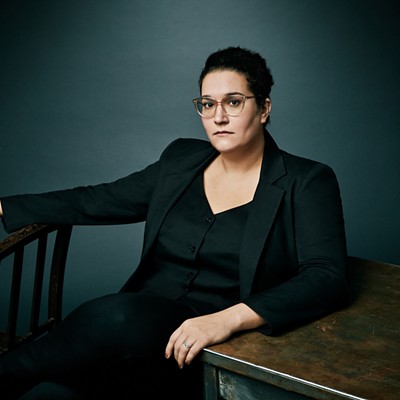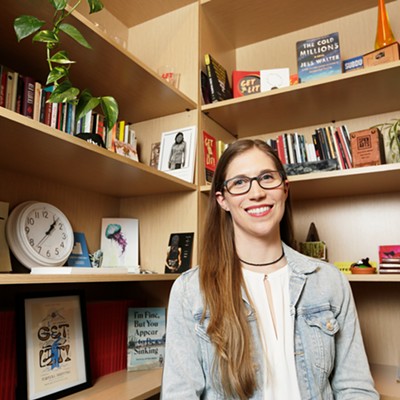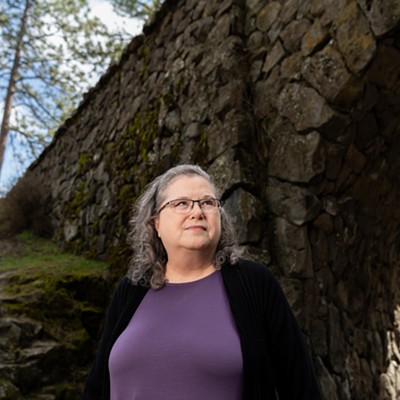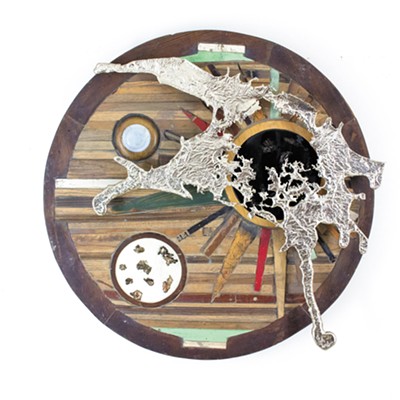Laying in a Spokane hospital bed a few years ago, Melanie Sattler awoke every day to face both cancer and the plain, lifeless walls of her hospital room.
She remembers thinking that if she could only paint the door of her hospital closet orange, then she “could handle laying here for so long just staring.” Instead she asked her son to bring in an orange sarong from Hawaii to hang on the door: a colorful reminder of other times, other places.
Color and art, she said, “allow us to escape, even if only for a moment, to a place our spirit and imagination can be without pain and worry.”
The people at Bonner General Hospital in Sandpoint understand that. A decade ago, an ambitious volunteer started an art program at the hospital that has transformed the walls into a gallery space for a massive, permanent art collection, with 450-plus pieces created by 288 different artists.
The program was the brainchild of the late Marianne Finlay, who had spent 20 years as volunteer art curator at the Redlands Community Hospital in Redlands, Calif. Finlay talked her
Sandpoint friends — Polly Mire, Ginny Jensen, Hazel Hall, Betty Ann Diehl, Dorothy Modafferi, Verna Mae Davis — and the BGH board of directors into doing something similar.
Bonner General provided initial funds to purchase eight pieces from Redlands, and the committee tapped local artists, too, asking them to donate one piece and promising to purchase a second.
Faced with abundant wall space and dwindling funds, the team created “Art Transplant,” soliciting donations of any art no longer wanted — like the abstract you thought went well with the couch. Selling the donated items initially raised several thousand dollars. It became a community event in Sandpoint, lasting five years until, one by one, the committee members moved on and the sale no longer proved viable.
That has left Polly Mire running the program for the last three years. She would arrange the artwork through the hospital, frame new works and arrange new acquisitions. Though her funding is essentially non-existent, artwork adorns virtually every wall in the hospital.
The artwork here is as diverse as the community — each piece with its own story. There are works donated by employees and created by former employees. There’s even art by former patients.
Near the children’s wing, the colors in the paintings — of flowers, faraway places and fantastical characters — become brighter. Some of the work is actually by area children, including an ever-rotating display from Kaleidoscope, a community art program for 3 rd through 5 th graders.
There’s artwork outside, too.
In the volunteer-run Healing Garden, there are sculptures of giant butterflies and caterpillars, a yearround water feature, a Tolkienesque tree fort, and a chapel with tangerine-colored walls.
“We’ve discovered that art can be an important part of the healing process,” explains Bonner General CEO Cheryl Rickard. In addition to “softening” the hospital environment, Rickard said she often hears comments that artwork helps to diffuse patient fears, provide hope and promote a sense of well-being.
Doctors agree. In 1997, the Joint Commission on Accreditation of Healthcare Organizations cited studies in which patients who viewed art recovered more quickly.
“Art affects our immune system,” noted Leah Dickstein, PhD, in a 1994 American Artist article. Moreover, “art gives [patients] a sense of control” in situations where they’re otherwise most vulnerable.
“The arts benefit patients by aiding in their physical, mental, and emotional recovery, including by relieving anxiety and decreasing their perception of pain,” notes the Society for the Arts in Healing.
Patients aren’t the only ones who benefit. According to THESAH, art benefits caregivers — friends and family — and healthcare staff, too.
“From architectural design to art on the walls, from access to natural lighting to the inclusion of nature through landscaping and healing gardens, the physical environment has a significant impact on relieving patient and caregiver stress, improving health outcomes, enhancing patient safety and overall quality of care, and reducing costs.”
Having art on the walls seems like such a natural thing that it makes you wonder what a place might be like without it.
The
art at Bonner General Hospital reminds people that even in the grayest
of times, there’s still hope — and color — to be found.
Bonner County General Hospital • 520 N. Third Ave. • Sandpoint, Idaho • bonnergeneral.org • (208) 263-1441

